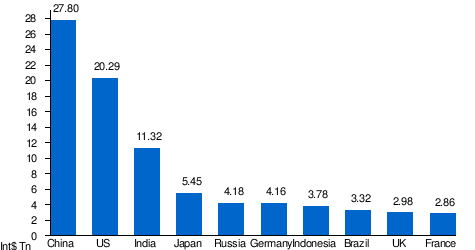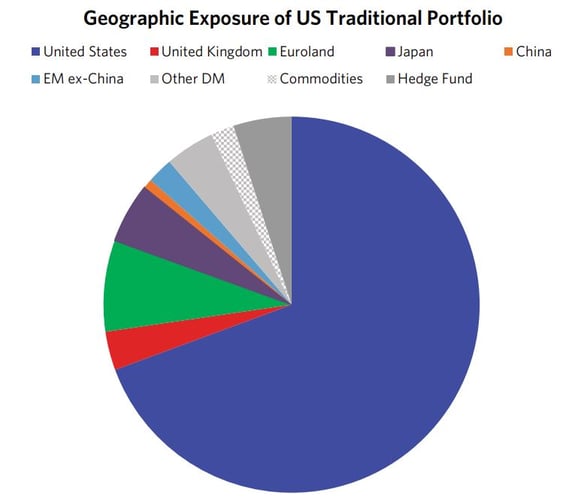China and Diversification
China is a growing part of the world's economic pie. In fact, it is already the largest economy in terms of GDP adjusted for purchasing power parity, according to data from the International Monetary Fund.
Largest economies by PPP GDP in 2020 according to International Monetary Fund

In any case, when we talk about geographical diversification, China does not always have a relevant weight in investors' portfolios, as we see in the graph for a portfolio created in the US.
 Source: Bridgwater Associates, Geographic Diversification Can Be a Lifesaver
Source: Bridgwater Associates, Geographic Diversification Can Be a Lifesaver
Despite the fact that at the end of last year Chinese A-type shares were included in the MSCI Emerging Markets index (thus increasing the weight of China), China is still out of the MSCI World Index. In this last index, the United States weights more than 65%.
China is present in another world index, the FTSE All-World, although its weight barely exceeds 5%, against the 56% represented by the United States.
The conclusion we can draw is that there is a widespread underweight of China in most of the portfolios, both those who choose active management and those who choose passive management.
Once we know this, we can tailor our portfolio to be more geographically diversified. As Bridgewater points out in Geographic Diversification Can Be a Lifesaver, geographic diversification is key when building portfolios.
If we think that our portfolio is diversified only for being invested in several countries, we can make a serious mistake, and even more so if we leave the world's largest economy out of our portfolio.
